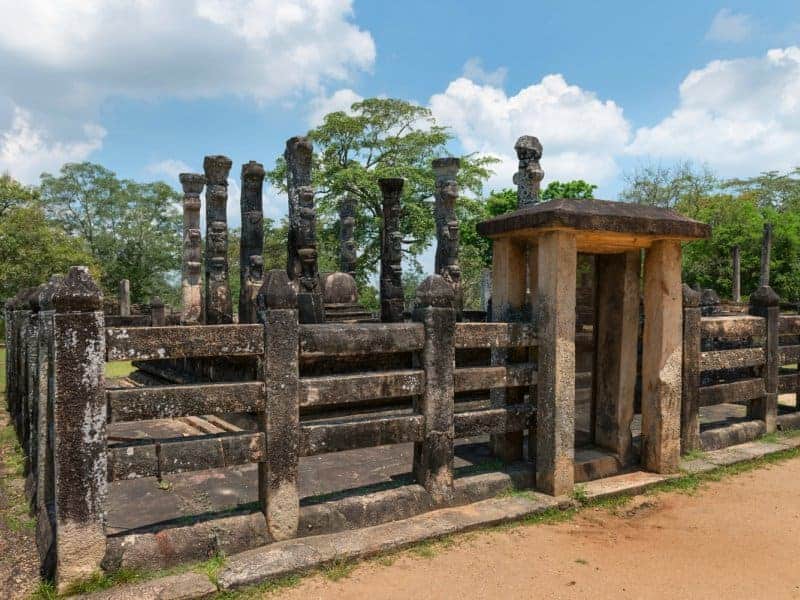This time one of Nissanka Malla’s actual works of art, the Nissanka Latha Mandapaya was built both for his personal benefit and for listening to Buddhist sermons. Thus it was almost like an alms-hall or simply a building kept separate from his usual royal abode and reserved just for the purpose of engaging with the Buddhist clergy.
It is part of the Dalada Maluva, a special area of the city of Polonnaruwa that includes the Atadage, Hetadage and Polonnaruwa Vatadage. These are among the most sacred and important buildings in the city limits and all of these were held in great reverence. The Nissanka Latha Mandapaya is often considered as Nissanka Malla’s magnum opus. In terms of the artwork, it is one of the most impressive historical places in Sri Lanka.
He was a foreign king, from east India’s Kalinga Dynasty and he needed a firm foothold on the Sri Lankan throne. His reign covered just nine years during the early 12th Century and his achievements were hardly remarkable, although he is one of the three “greats” of the Polonnaruwa Kingdom. There was a certain amount of dynastic quarreling in the country when he came to power and it only became worse after his death. This building once had a wood and tiled roof but only the granite is preserved to this day. The pillars inside the structure look like curved lotus stalks, and must have been painted in bright shades of color. Their capitals look like half-bloomed lotus blossoms. There are eight such pillars in the inner sanctum and they all surround a small stupa. It is the only instance in Sri Lanka history that such pillar construction is seen. A low stone fence of horizontal granite posts encircles the structure. All in all, Nissanka Latha Mandapaya is tiny. Each of the inner columns is just eight feet tall, but the complexity of the stonework makes it obvious that the king and his workers had to keep it on a small scale to ease the strain of construction.
Written by Vasika Udurawane for Travel Lanka Compass



0 Comment